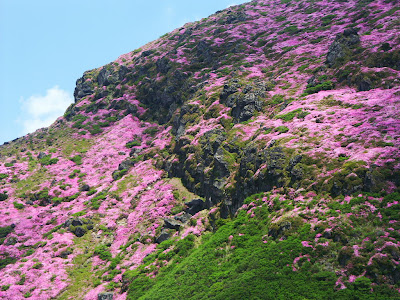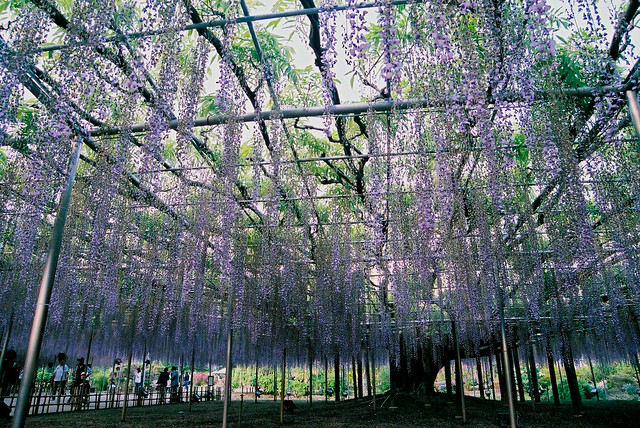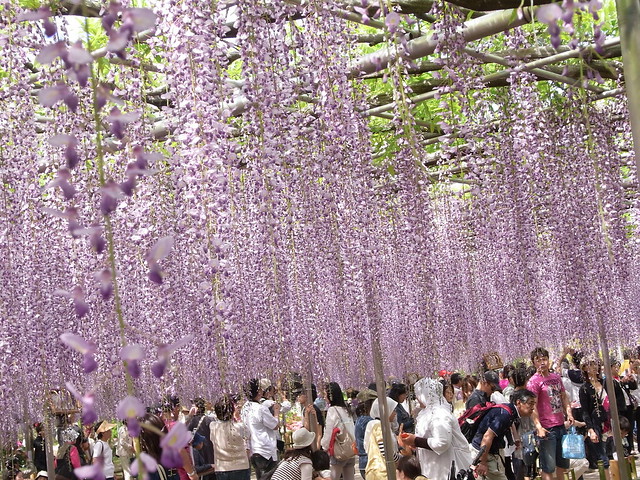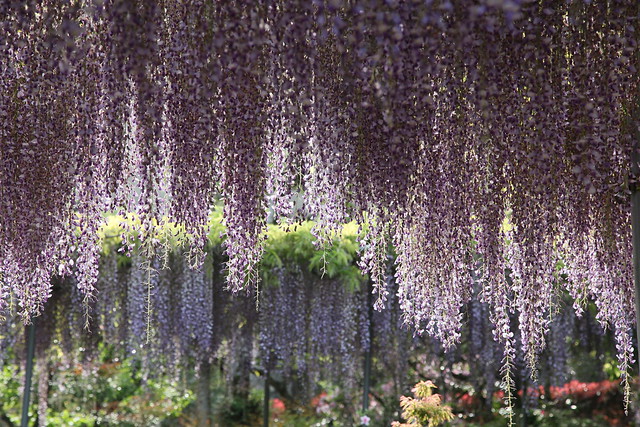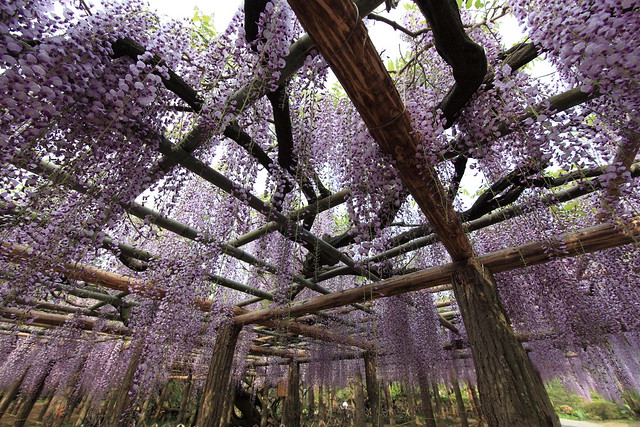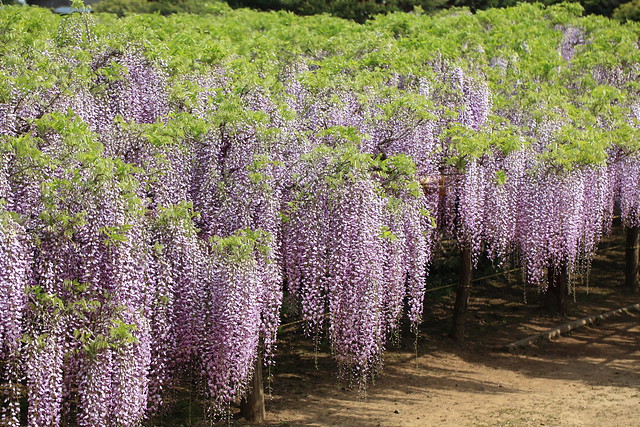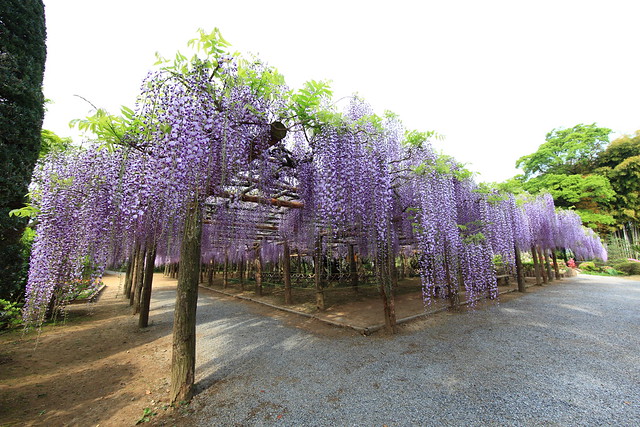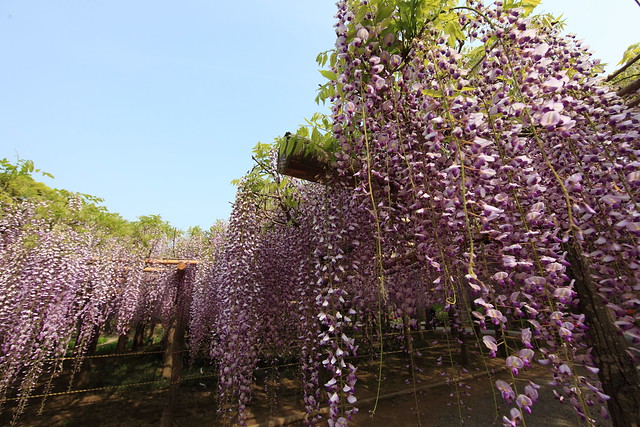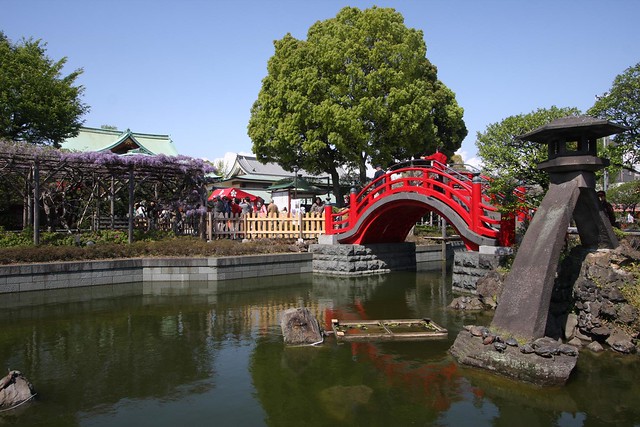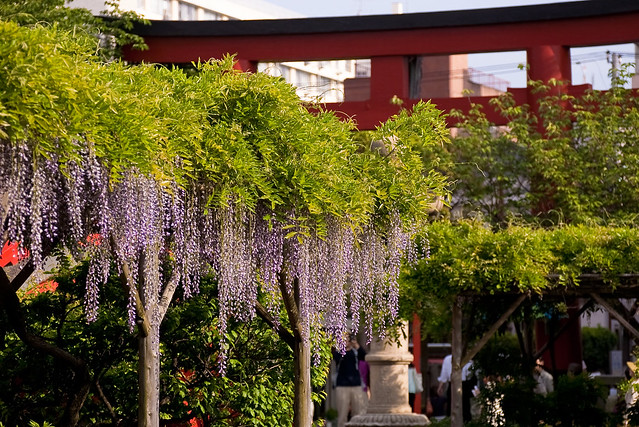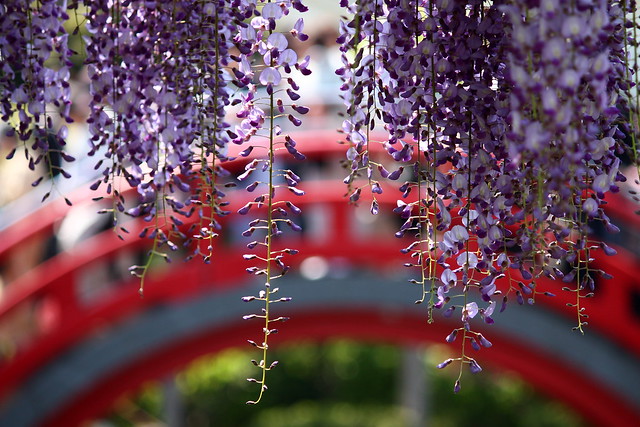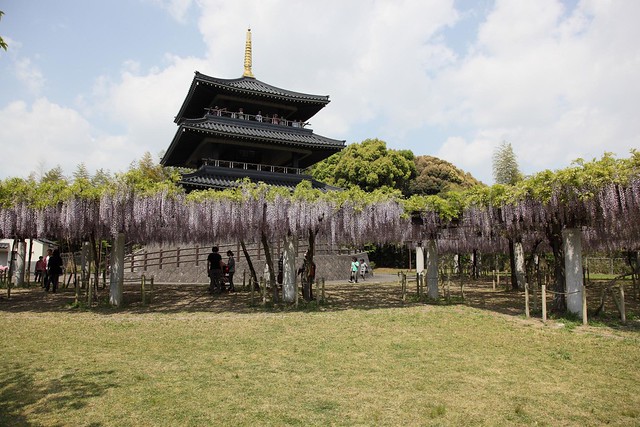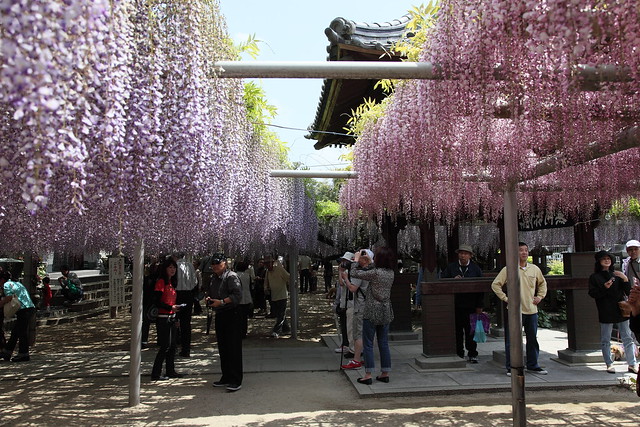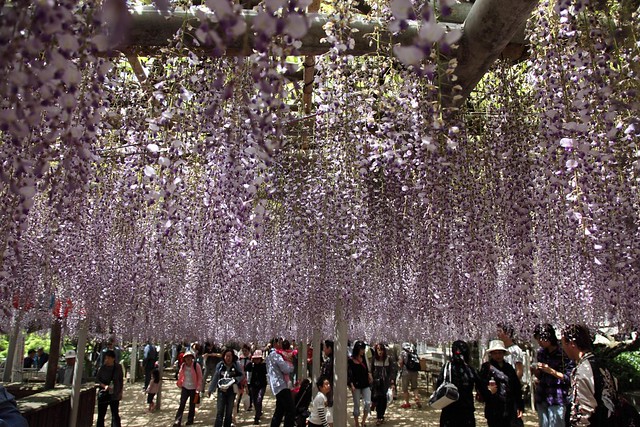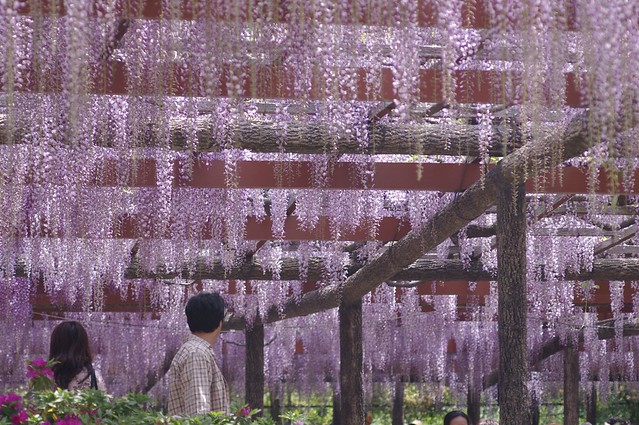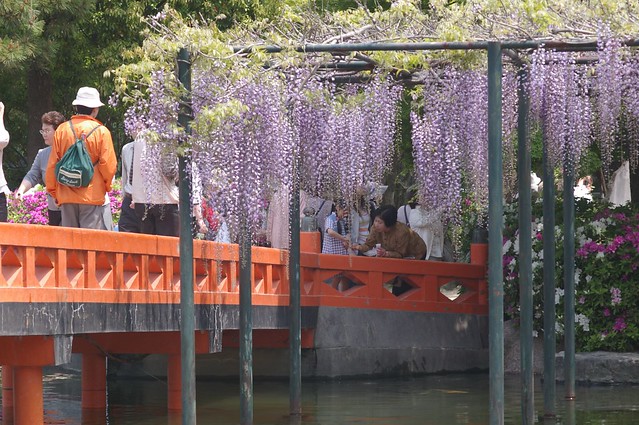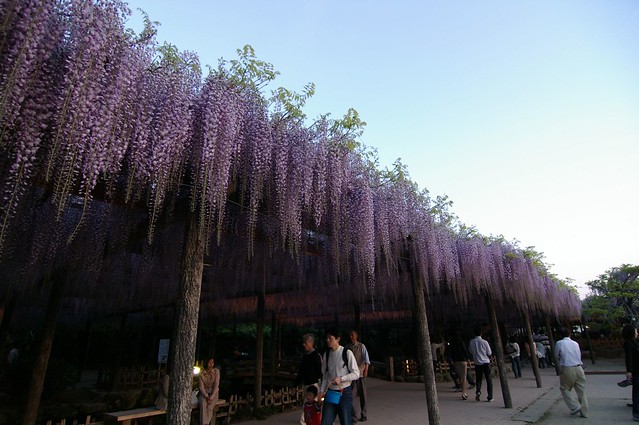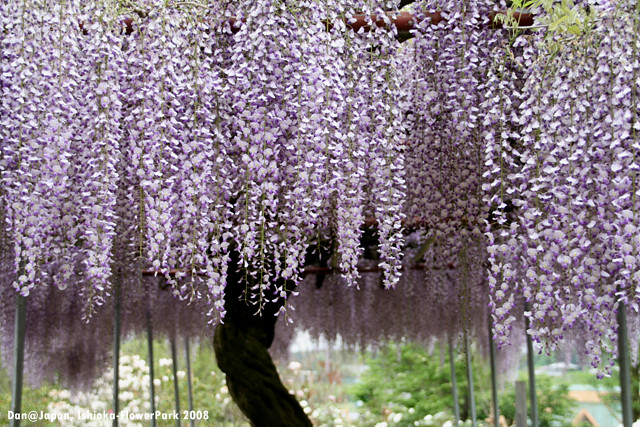wisteria-viewing spots:
http://www.ne.jp/asahi/ashikawa/smile/fujiguide.html
wisteria festivals:
http://flower.enjoytokyo.jp/fuji/
Ashikaga Flower Park first comes to mind when I think of a wisteria viewing spot. Now is the best time to view purple and pale pink wisterias. About 145-year-old big wisteria is expected to peak soon.
I have posted another photos of the park's wisterias here before.
double-flowered wisteria
Big wisteria of Kurogi in Yame-gun, Fukuoka Prefecture
It is said that an imperial prince himself planted the wisteria in 1395. The wisteria has been designated as a national natural treasure.
Shogun Wisteria in Fukuoka Prefecture at Onakatomi Jinja Shrine in Ogori City, Fukuoka Prefecture
According to legend, an imperial prince prayed to cure his battle injury at the shrine in 1359, and he presented a wisteria to thank the deity for his full recovery. The tree is estimated to be 650 years old.
Daikozen-ji Temple(大興善寺) in Miyaki-gun, Saga Prefecture
The temple is famous for its azaleas.
Wisteria of Ushijima, at Touka-en garden, Kasukabe City, Saitama Prefecture
The tree is designated as a Special National Treasure. The tree is estimated to be over 1,000 years old. It's expected to peak from April 25 to May 3.
According to legend, the Buddhist priest Kobo Daishi(774-835) himself planted the wisteria on the ground of a temple. Its owners changed several times after the temple was abolished in 1874. The garden maintains the tree now. The tree is open to the public for a fee only during flowering period.
Kameido Tenjin Shrine(亀戸天神) in Tokyo
The shrine has been well known as a wisteria viewing spot since the Edo Period. A wisteria festival is being held from April 20 to May 6.
photo taken between January, 1914 and December, 1918
Kissho-ji Temple(吉祥寺) in Yahatanishi Ward, Kitakyushu City, Fukuoka Prefecture
The temple has a 150-year-old wisteria. A wisteria festival will be held from April 27 to 29.
Tennogawa Park(天王川公園) in Tsushima city, Aichi Prefecture
The Owari Tsuhima Wisteria Festival(尾張津島藤まつり) will be held from April 25 to May 6. Tsushima was famous for its wisterias. The park has 114 trees of 12 different kinds.
Sumiyoshi Jinja Shrine(住吉神社) in Akashi City, Hyogo Prefecture
Harai no Fuji(祓除の藤, purifying wisteria)
When passing under the wisteria, people feel as if they were purified with onusa.
Onusa(nusa) is streamers (made of linen, paper, etc.) attached to a long pole and is used for purification at religious services of Shinto. It is waved left and right during purification rituals. Ancient people transferred their stains onto it by rubbing themselves with it and threw it in rivers.
Sennen-fuji(千年藤, thousand-year-old wisteria) at Dazai Jinja Shrine(大歳神社) in Shiso City, Hyogo Prefecture
It is said that the wisteria was planted in 960.
Flower Park in Ishioka City, Ibaraki Prefecture







































